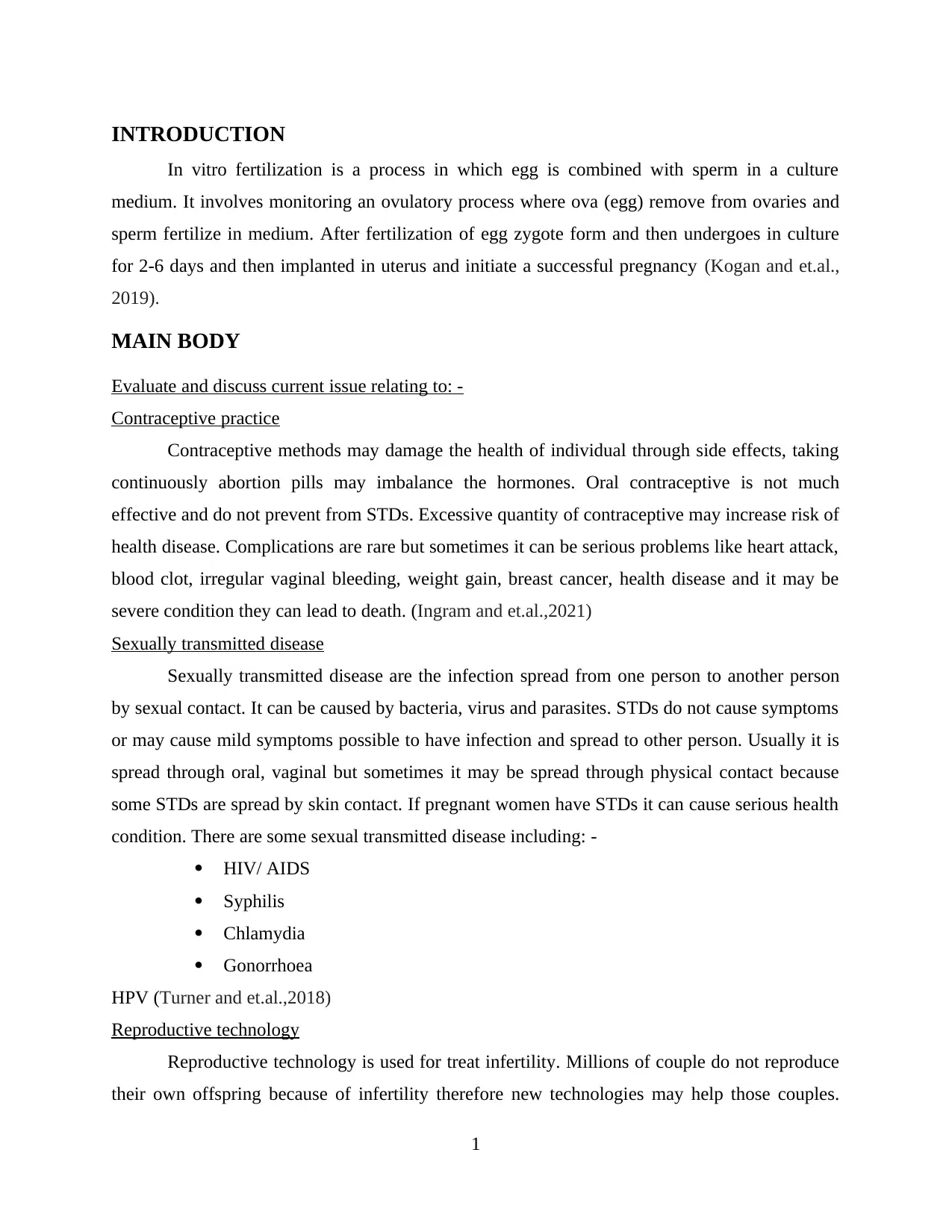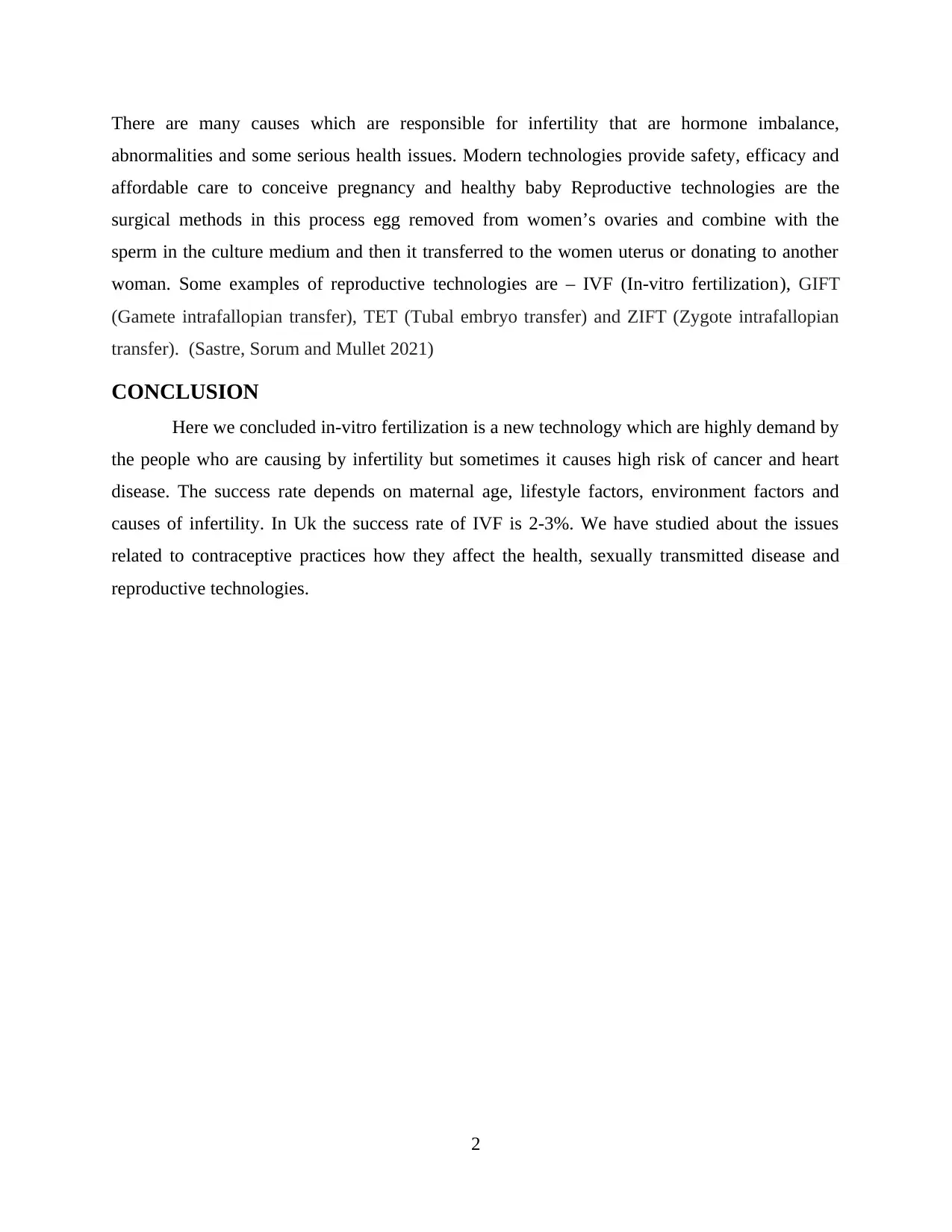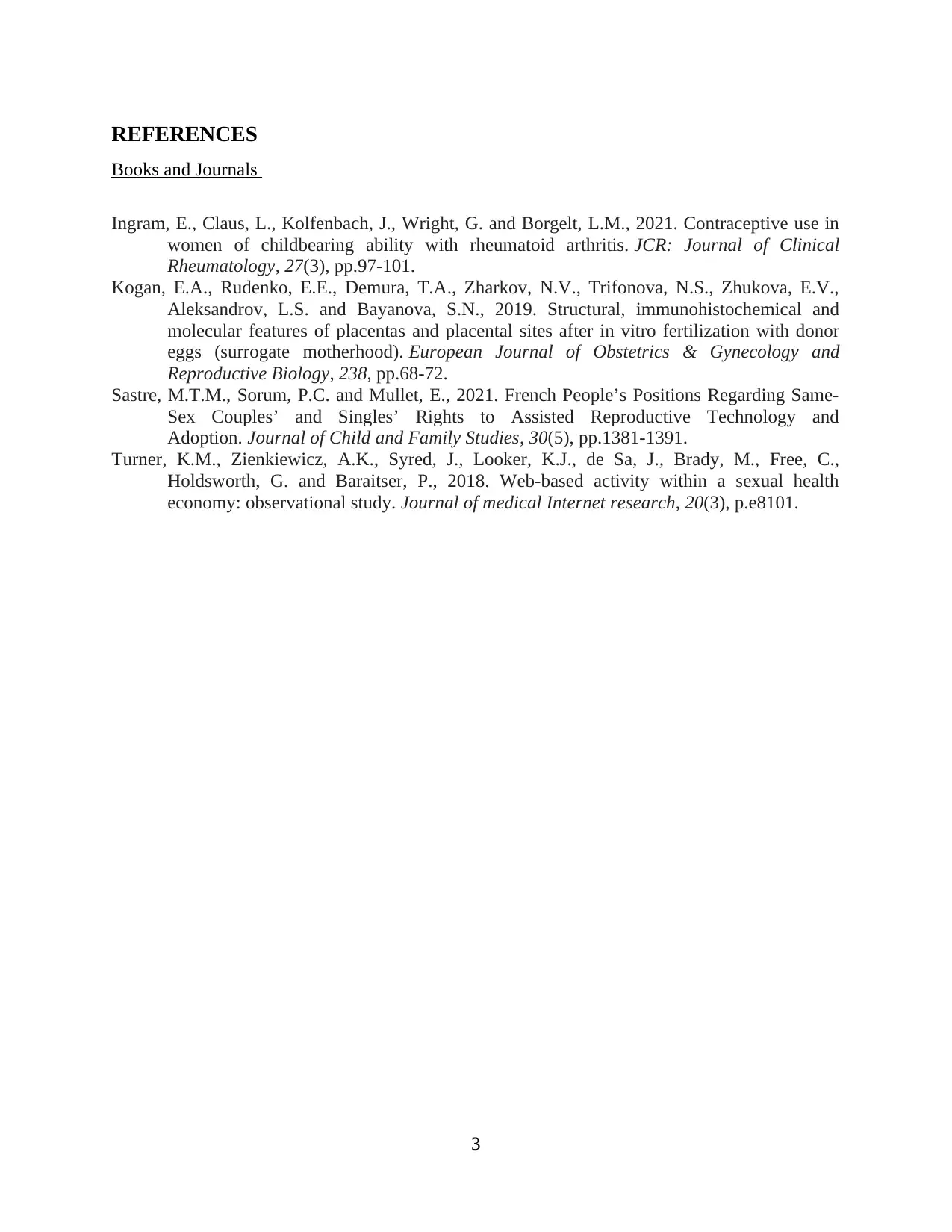Human Reproduction and Health: Current IVF Issues in the UK
VerifiedAdded on 2023/06/10
|5
|789
|112
Report
AI Summary
This report provides an overview of in-vitro fertilization (IVF) and its related issues within the context of the UK healthcare system. The report begins with an introduction to IVF, explaining the process and its significance in treating infertility. The main body of the report evaluates and discusses current issues including contraceptive practices, sexually transmitted diseases (STDs), and reproductive technology. It examines the health implications of contraceptive methods, the impact of STDs on reproductive health, and the advancements in reproductive technologies like IVF, GIFT, TET, and ZIFT. The conclusion summarizes the challenges and success rates of IVF, emphasizing the influence of factors like maternal age and lifestyle. The report highlights the demand for IVF while acknowledging potential health risks like cancer and heart disease. The report references relevant books and journals to support the analysis.
1 out of 5












![[object Object]](/_next/static/media/star-bottom.7253800d.svg)